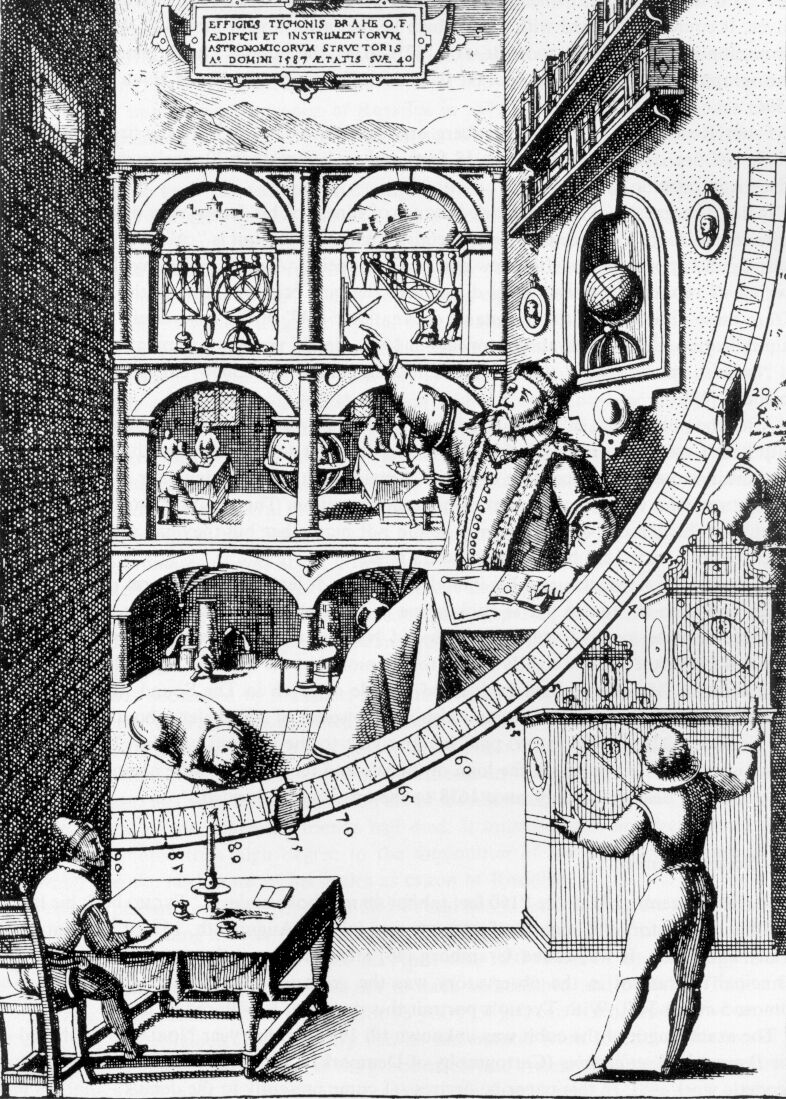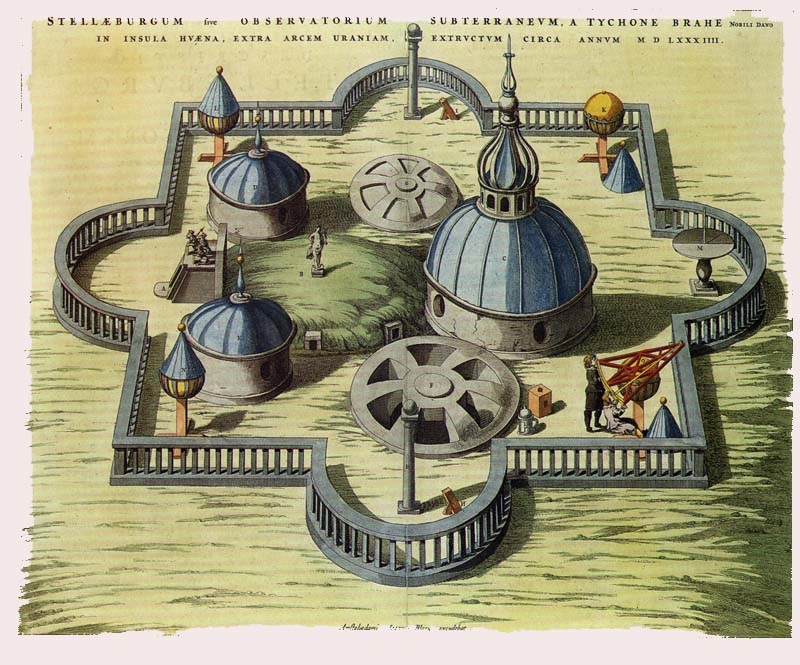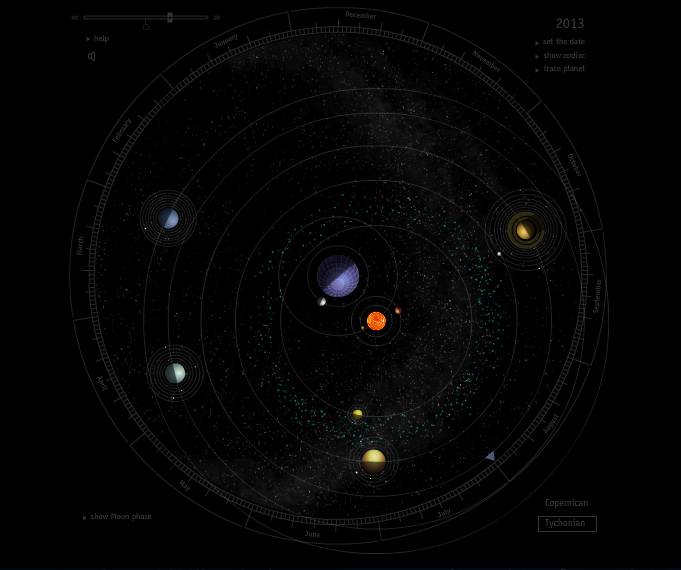 Schematic Representation of stellar Parallax.
Schematic Representation of stellar Parallax.
Tycho Brahe (1546-1601) proposed an experiment that would determine whether or not the earth goes around the sun. Basically, if the Earth orbits the sun, nearby stars should periodically "move" back and forth in their position with respect to more distant stars every 6 months. If the Earth was stationary (at the center of the Universe, this wouldn't occur.
 Schematic Representation of stellar Parallax.
Schematic Representation of stellar Parallax.
Distant
stars act as a fixed reference coordinate system. "1" and "2" correspond
to Earth's position relative to the Sun 6 months apart and circle in the center
represents the Sun.
Nearby stars, when observed at these two positions
will show a small movement with respect to the background of fixed stars.
At position 1, the nearby star would be viewed against a background
that contained star B while 6 months later, at position 2,
the nearby star would be viewed against a background
that contained star A. This shift in the background position is measured
in angles (theta) - a convenient way to measure distances
projected on the sky (divide the sky into 360 degrees). The unit of measurement is an arcsecond, 1/3600th of a degree.
Note, the nearer the star the bigger the shift the nearby star makes against
the background. Note that the nearest stars produce parallax shifts less than 1". This means more distant stars produce smaller shifts.
A visualization of Parallax. Notice that the bigger the eye separation or "orbit", the bigger the shift.

He built a very elaborate observatory at Ven that made elaborate use of siting tubes but no telescopes since they hadn't been invented yet!


He essentially used a series of long "sextans" that could measure fairly accurately the angle of a star above the horizon. The azimuth (the direction parallel to the horizon) was measured in degrees from some starting point in this circular observatory out portals that were equally spaced around the floor.
His observatory allowed him to take relatively precise data for measuring the
position of Mars night after night.

Upon failing to detect stellar parallax he proposed this strange hybrid model for the solar system which actually opens up more questions. Fortunately, this model didn't last very long.

 This was a "star"
that appeared suddenly where none had been seen before, and was visible for
about 18 months before fading from view. Since this clearly represented a
change in the sky, prevailing opinion held that the supernova was not really a
star but some local phenomenon in the atmosphere (remember: the heavens were
supposed to be unchanging in the Aristotelian view). Brahe's meticulous
observations showed that the supernova did not change positions with respect to
the other stars (no parallax).
Therefore, it was a real star, not a local object. This was
early evidence against the immutable nature of the heavens.
This was a "star"
that appeared suddenly where none had been seen before, and was visible for
about 18 months before fading from view. Since this clearly represented a
change in the sky, prevailing opinion held that the supernova was not really a
star but some local phenomenon in the atmosphere (remember: the heavens were
supposed to be unchanging in the Aristotelian view). Brahe's meticulous
observations showed that the supernova did not change positions with respect to
the other stars (no parallax).
Therefore, it was a real star, not a local object. This was
early evidence against the immutable nature of the heavens.
Not for the only time in human thought, a great thinker formulated a pivotal question correctly, but then made the wrong choice of possible answers: Brahe did not believe that the stars could possibly be so far away and so concluded that the Earth was the center of the Universe and that Copernicus was wrong.